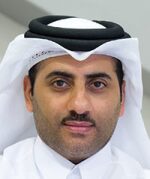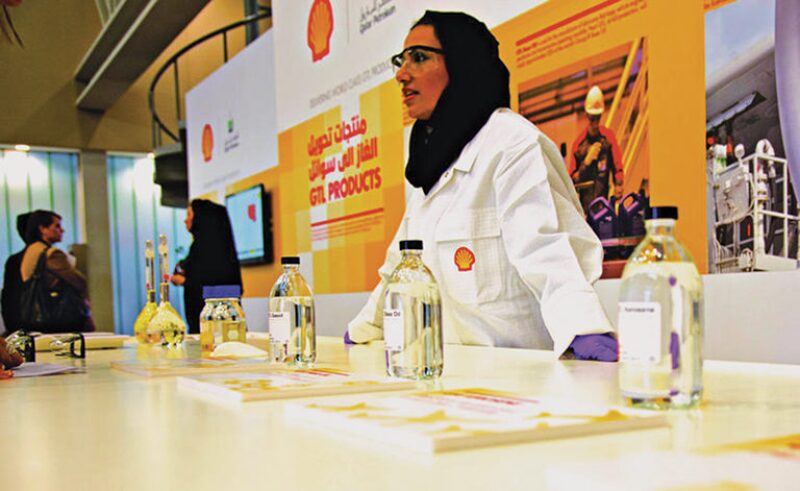
Youssif Saleh, general manager of Qatar Shell Research and Technology Centre in the Qatar Science and Technology Park, discusses the R&D strategy of the center and in Qatar.
What are the main drivers behind the decision to establish an R&D center in the Middle East?
We are pleased about the role that Qatar plays in Shell’s overall technology strategy through our world-class research and development program based at the Qatar Shell Research and Technology Centre (QSRTC). This makes QSRTC a member of Shell’s wider R&D community, which includes technology centers in cities such as Amsterdam and Houston. QSRTC’s mandate is to provide a home for research that adds value both to the state of Qatar, to Shell, and to our partners. Therefore, our work is focused on the development and implementation of technologies that support Qatar’s specific needs, as well as support Qatar’s role as the world’s largest liquefied natural gas exporter and the gas-to-liquids (GTL) capital of the world. Moreover, we work with many of Qatar’s universities and academic institutions abroad, and provide training in R&D to Qatari national staff as part of Shell’s support for Qatar’s journey toward a knowledge-based economy.
When was QSRTC established and on what specific areas of R&D does it focus its efforts?
We have been an anchor tenant at the Qatar Science and Technology Park (QSTP), a home for technology-based companies from around the world, since 2008 with a USD-100-million funding commitment over 10 years. That was also the year we became the first tenant of QSTP to file a patent based on research conducted in Qatar. The center’s current activities build upon Shell’s extensive experience in the GTL field and focuses specifically on catalyst testing, product development, and GTL byproduct research, including water treatment and reuse. Catalysts are a key focus area since they are essential to the process that converts natural gas into liquid fuels and other products at our Pearl GTL facility, the largest GTL plant in the world. Our researchers have also worked on developing new uses for sulfur, a coproduct of the GTL process, and are collaborating with scientists from around the world on improving the understanding of carbonate reservoirs.
Does the center actively partner with other parties in R&D?
Our research in carbonates and carbon storage research is a leading example of cross-sector R&D collaboration among government, academic, and industry stakeholders. QSRTC is helping to better understand Qatar’s subsurface through a flagship research partnership investigating the injection of CO2 into carbonate reservoirs. Since 2008, Shell and Qatar Petroleum have been working on a USD‑70-million, 10-year research collaboration in conjunction with the UK’s Imperial College and Qatar Science and Technology Park. This fundamental research is important to understand the potential for the storage of the greenhouse gas CO2 in carbonate rock formations or improved hydrocarbon recovery, but also delivers insight into many other aspects of carbonate hydrocarbon systems both in Qatar and around the world. Qatari doctorate researchers are already working on this laboratory-based project at Imperial College London and, starting last year, an increasing proportion of the consortium’s research is being conducted in Qatar, at QSRTC and Qatar Petroleum’s Research and Technology Centre.
What are some of the issues associated with operating Pearl GTL where QSRTC is playing an important role?
In Pearl GTL, the chemical reaction that produces the building blocks for GTL products also produces water in large quantities. Pearl GTL’s industrial water processing plant is the world’s largest site for the recovery, treating, and reuse of industrial process water. With a capacity to treat 280,000 bbl of water a day, Pearl GTL’s water treatment facility is comparable in size to a plant for a town of 140,000 people. Once cleaned and treated, this water is reused and recycled for cooling and for steam systems, whilst a small amount is also used to maintain the bushes and shrubs around the plant.
A particular focus in Qatar’s desert environment is finding solutions for the efficient use, and reuse, of water. QSRTC has a number of research and development programs that contribute directly to this strategy. In partnership with the Ministry of Environment, QSRTC runs an experimental farm in Rawdat Al Faras in Qatar, evaluating the potential for industrial water to be used to sustain plant growth. Meanwhile, in the center’s lab, various other R&D initiatives support our work on water use and reuse, including an anaerobic biotreatment testing facility staffed by leading water research scientists. Qatar Shell also funds a Chair for Sustainable Development at Qatar University, currently held by Ajmal Khan, one of the world’s foremost experts on plant growth using brackish water.
How has research played a role with breakthrough products associated with GTL?
Shell invests heavily in research to find ways to deliver cleaner-burning and more efficient fuels, as well as new ways of using hydrocarbons and producing energy. Here in Qatar, Pearl GTL produces a host of premium, cleaner-burning hydrocarbon products from gas, which are sold into specialist markets all across the world. More recently, Pearl GTL began producing a new product called GTL Jet Fuel, recently introduced for commercial use by Qatar Airways flying from Doha International Airport. This product, the first new aviation fuel to be licensed for use in the industry for more than 2 decades, was the result of a long-term multistakeholder research partnership by Qatar Science and Technology Park, involving global industry leaders such as Qatar Airways, Airbus, Qatar Petroleum, Rolls Royce, Woqod, Texas A&M University, and QSRTC. It was the first such multinational, global study on GTLs and has delivered a global legacy for Qatar, propelling the research from the laboratory to the engine, with the potential for tangible worldwide benefits for local air quality.
Does the center focus any of its research to help discover more hydrocarbon reserves in Qatar?
Qatar’s subsurface holds tremendous potential for oil, gas, and water reserves. Developing and deploying innovative technologies to support Qatar unlock these resources is a major focus area for our research. In partnership with seismic experts Petroleum Geo-Services (PGS), Shell has developed a batteryless, fiber-optic seismic technology. Making use of cutting-edge fiber-optic and laser technology, the system is designed to provide a safer, more cost-effective method to deliver more accurate and higher-quality seismic data for exploration and permanent production monitoring. After 3 years of collaborative research with PGS, Shell successfully completed the pilot testing of the new seismic system in north Qatar. The collected data has been analyzed at QSRTC using state-of-the-art data processing, imaging, and visualization techniques, with very encouraging results.
How engaged is the center in working with Qatari universities to help build capacity among students in technology-related fields?
The center has an active program of collaboration with the academic community in Qatar, as well as abroad. With our own outreach and university collaboration team, we seek to position Shell as an active partner in supporting universities and other educational institutes in Qatar. As part of this, we share our skills and expertise, thereby effectively linking our scientists with academic experts and students. In 2013, Qatar University and QSRTC signed a memorandum of understanding that allows us to share industrial and technical knowledge with faculty and students and facilitate greater collaboration through expert lectures, internships, competitions, awards, and recruitment of students. We also signed a memorandum of understanding with Texas A&M University at Qatar to strengthen a partnership already spanning 10 years in the fields of technology, science, research, and development.

